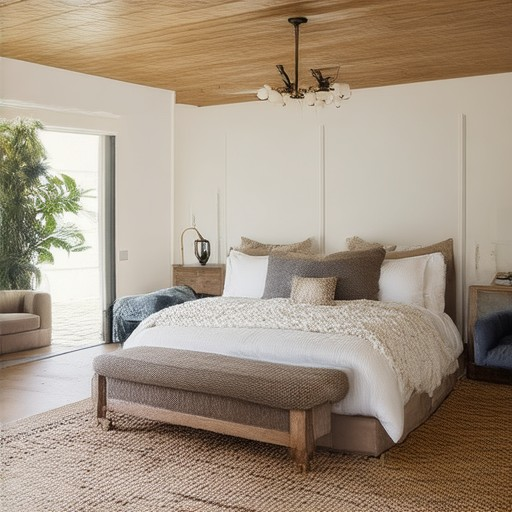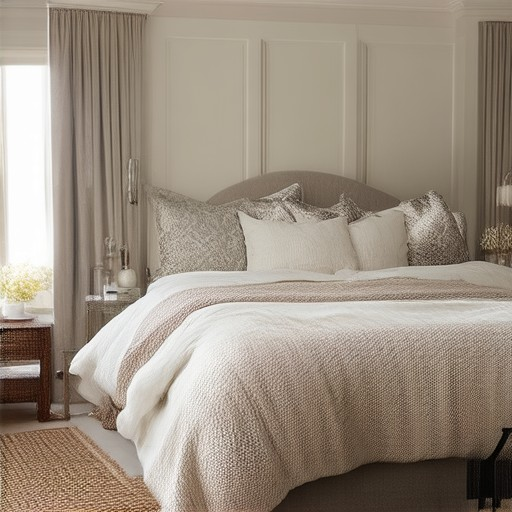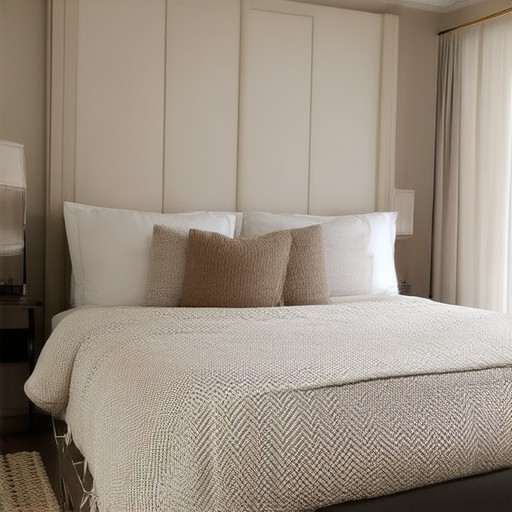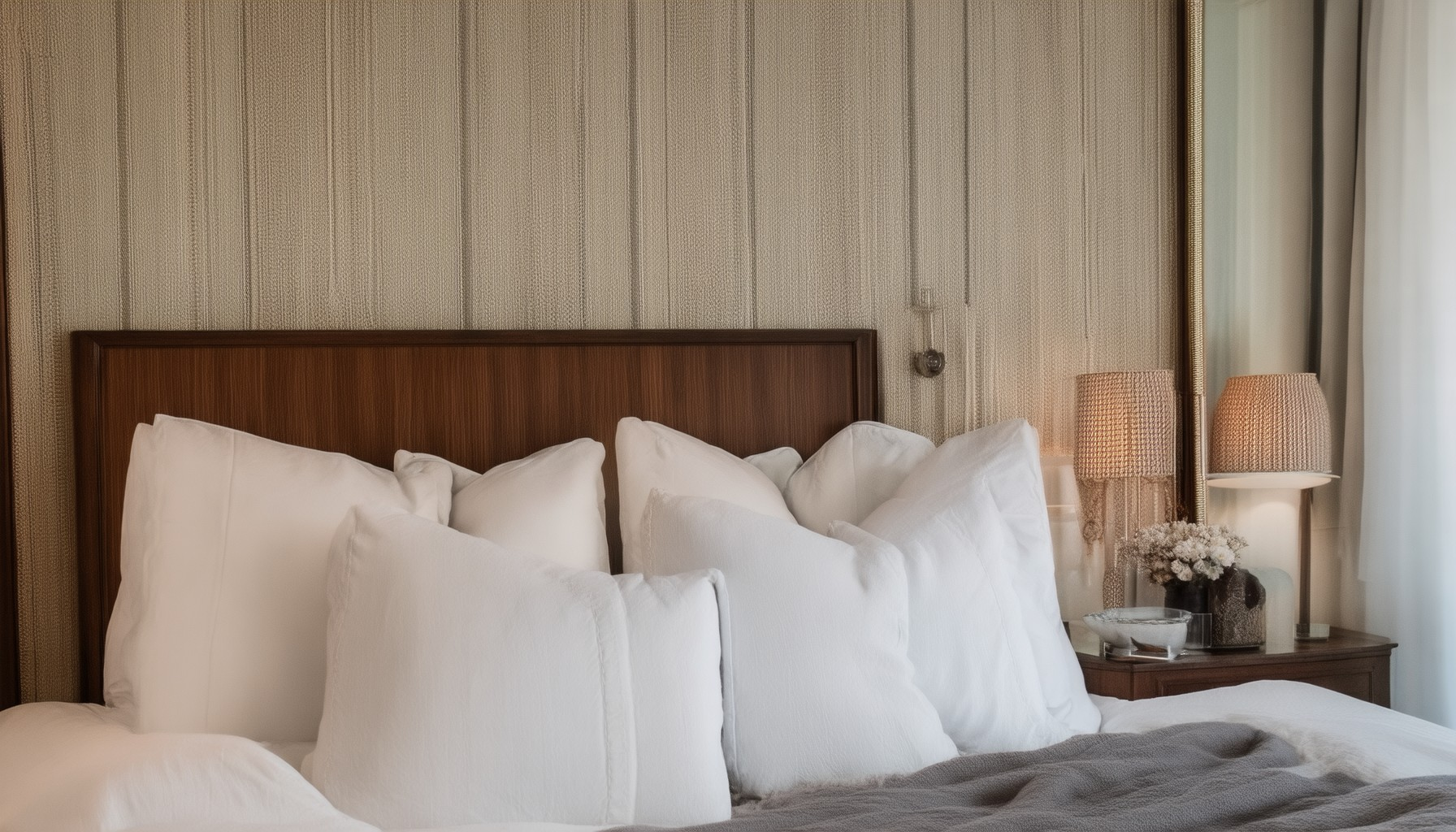Creating a welcoming and comfortable guest room is essential for ensuring your visitors feel at home during their stay. Whether you’re hosting friends, family, or business associates, the first impression of your guest room can leave a lasting impact. Revamping your guest room doesn’t have to be an overwhelming task—small changes can make a big difference in enhancing comfort, style, and functionality. From optimizing space-saving solutions to exploring modern design trends, this guide will walk you through practical tips and ideas to transform your guest room into a haven of relaxation and elegance. Discover how even the smallest adjustments can elevate the guest room experience, ensuring your visitors feel warmly welcomed and well-cared-for. With a focus on both aesthetics and practicality, this comprehensive approach to guest room revamping will provide you with everything you need to create a space that stands out.

How to Upgrade a Guest Room
To transform your guest room into a welcoming and functional space, follow these organized steps:
1. Define the Layout and Functionality
Create a multi-functional design that caters to different activities:- Bed Area : Ensure the bed is comfortable and inviting.- Seating Zone : Add a sofa, chair, or bench for relaxation.- Vanity/Workspace : Include a table or dresser for grooming or working.- Storage Solutions : Opt for built-in shelves, cabinets, or baskets for extra space.
2. Choose a Color Palette
Select a cohesive color scheme that promotes calmness: – Use neutral tones like beige or light gray for walls and floors. – Introduce soft accent colors for bedding, curtains, or throw pillows. – Consider calming blues or greens for a serene atmosphere.
3. Select Furniture Wisely
Prioritize pieces that offer both style and function:- Comfortable Bed : Invest in a high-quality mattress and bedding.- Versatile Seating : A daybed or bean bag for additional seating.- Storage Solutions : Utilize drawer chests, open shelving, or baskets.- Functional Desk/Table : Add a small desk or console table for workspace.
4. Enhance Lighting
Improve both task and ambient lighting: – Install overhead lighting for general illumination. – Add task lights near the bed or mirror. – Use table lamps or wall sconces for ambiance. – Consider natural light by using sheer curtains or blinds.
5. Add Personal Touches
Make the room feel like a retreat: – Hang artwork or photographs that reflect your personality. – Incorporate plants or flowers for a fresh touch. – Add textile accents like throws, pillows, or rug patterns.
6. Implement Practical Upgrades
Ensure the room is both functional and comfortable: – Use high-quality bedding for optimal sleep quality. – Add noise-reducing elements like blackout curtains or white noise machines. – Include a waste basket, towel rack, and coat hook for convenience.
7. Organize the Space
Keep the room tidy and guest-ready: – Use organizers, bins, or labels for belongings. – Maintain a minimalistic approach to prevent clutter.
By following these guidelines, you can create a guest room that is both stylish and practical, ensuring your visitors feel comfortable and welcome.
How to Spruce Up a Guest Room
- Assess the Space: Start by evaluating the current state of the room. Determine what needs improvement, whether it’s decor, functionality, or both.
- Choose a Color Scheme:** Select a cohesive color palette that creates a relaxing atmosphere. Neutral tones like soft grays or calming blues often work well for guest rooms.
- Update Bedding:** Invest in high-quality linens and bedding to enhance comfort. Consider adding throw pillows and a cozy blanket for extra warmth and style.
- Improve Lighting:** Install or upgrade lighting fixtures to provide ample illumination. A combination of task lights and ambient lighting can create a welcoming ambiance.
- Add Seating:** Introduce a comfortable chair or bench, especially if the room is used for relaxation or reading.
- Organize Storage:** Utilize under-bed storage or wall-mounted shelves to keep the room clutter-free and maximize space efficiency.
- Personal Touches:** Incorporate personal touches like artwork, photos, or a small plant to make the room feel inviting and unique.
- Consider Comfort Accessories:** Add items like a rug, curtains, or a decorative tray to complete the look and improve overall comfort.
- Link to Resources:** For more ideas, explore DIY Projects and Interior Design Ideas on our website.

What Should Every Guest Room Have?
A well-prepared guest room ensures comfort and convenience for visitors. Here’s a checklist for essentials:
- Comfortable Bedding: A high-quality mattress with fresh linens and pillows.
- Storage Solutions: Built-in drawers or a wardrobe for hanging clothes.
- Lighting: Overhead lighting, table lamps, and perhaps a decorative candle for ambiance.
- Bathroom Essentials: Basic toiletries, towels, and a shower curtain.
- Iron & Board: For last-minute clothing adjustments.
- Seating Option: A small chair or bench for relaxation or work.
- Clock Radio: For timekeeping and entertainment.
- Trash Can: For tidying up during the stay.
- Cozy Rug: To warm up the floor and add comfort underfoot.
- Emergency Kit: First aid kit, flashlight, and any necessary medications.
- Decor Touches: Artwork, plants, or other personal touches to make it welcoming.

Best Color for a Guest Room
Choosing the right color for a guest room involves balancing aesthetics, functionality, and ambiance. Neutral tones remain a popular choice for creating a welcoming and versatile space.
- Off-White: A classic option that provides a clean, crisp backdrop while offering versatility for decor accents.
- Beige: Offers warmth and a subtle elegance, perfect for creating a calming retreat.
- Gray: Available in various shades, gray adds sophistication and can easily complement a range of design styles.
- Brown: Adds warmth and depth, ideal for cozy guest rooms with a traditional feel.
For a more daring look, consider incorporating soft blues or greens to evoke a sense of peace and nature. Darker hues like charcoal or navy can create a luxurious atmosphere, while pastel shades bring a sense of lightness and joy.
Remember to consider lighting and flooring when selecting your color palette. Light-colored walls can help reflect natural light, making the room feel larger, while darker walls can provide a snug, inviting feel.
Looking for more ideas? Explore our guest room color guide for additional inspiration and tips on creating a welcoming space.
What Color Is More Welcoming?
Choosing the right color for your space can significantly impact its ambiance and feel. Among the many options, certain colors are universally recognized for their ability to create a warm, inviting environment. Here’s a breakdown of some of the most welcoming color choices:
- Green
- Green is often associated with nature, growth, and tranquility, making it an excellent choice for fostering a calm and relaxing atmosphere. A soft green, like sage green, pairs well with neutral tones and can create a soothing effect, perfect for living rooms or bedrooms.
-
Yellow
- Yellow is known for its ability to evoke warmth and happiness. It works particularly well in smaller spaces or areas where you want to draw attention and create a cheerful vibe. Be cautious with too much yellow, as it can overwhelm a room, but a pale shade like lemon yellow can add a bright, welcoming touch.
-
Blue
- Blue is another color that promotes feelings of calmness and serenity. Light blues, such as periwinkle or baby blue, can create a sense of openness and freshness, ideal for bathrooms or kitchens. Darker blues, like navy or cobalt, can add sophistication and comfort to living areas.
-
Purple
- Purple is linked to luxury and royalty, giving spaces an air of elegance and relaxation. Soft purples, such as lavender or eggplant, can create a serene atmosphere, while deeper purples can add drama and warmth to a room.
To further explore these color choices, check out our guide on color psychology in interior design for insights into how different hues influence emotions and spaces. Additionally, discover how to pair these colors effectively with our current decorating trends .

Colors Guests Should Avoid Wearing
The following colors are typically discouraged for guests to wear at various events:
- White and Ivory: These colors are often reserved for the bride or other key figures in the wedding party. Avoid wearing white or ivory to prevent clashing with the dress code.
- Pastel Colors: While pastels can be beautiful, they may clash with certain color schemes or themes chosen for the event. Opt for bolder colors instead.
- Black: Although classic, black can sometimes be too formal or overpowering depending on the event’s style. Stick to lighter shades if unsure.
- Navy Blue and Dark Jewel Tones: These colors are often associated with formal occasions and can be too bold for casual events. Lighten up with pastels or brighter hues.
For more tips on appropriate attire, consider checking out our Competitor Blog for additional guidelines tailored to different event types.
Conclusion: By avoiding these colors, guests can ensure they stand out in a positive way while adhering to the event’s dress code.





0 Comments